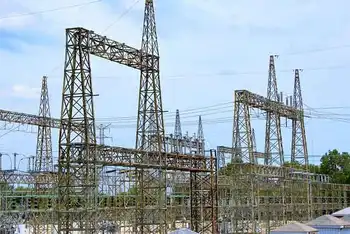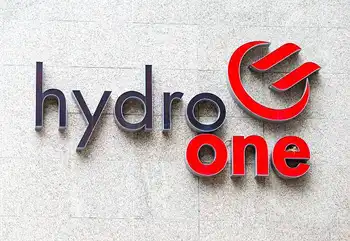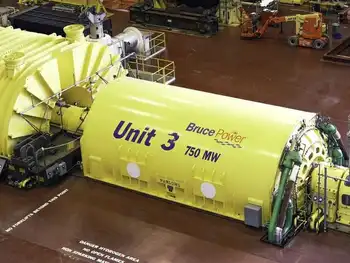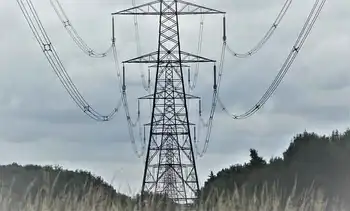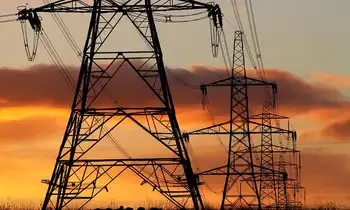Ohio's glass capital turns to solar to revive city
By Associated Press
Arc Flash Training - CSA Z462 Electrical Safety
Our customized live online or in‑person group training can be delivered to your staff at your location.

- Live Online
- 6 hours Instructor-led
- Group Training Available
Within the last year, the number of employees at Xunlight Corp. has grown from 16 to 64. And there's plenty of room for more.
It's among nine companies — from one of the world's biggest solar panel makers to a handful of startups — that are turning this Rust Belt city battered by job losses into a research hub for converting sunlight into energy.
"This is our chance," said Xunming Deng, a physics professor who founded Xunlight.
Investing in renewable energy is viewed as an answer to reviving the economy by creating "green jobs." Still, there's no guarantee these new solar companies will create enough manufacturing jobs to revive a region desperately looking for a new industry and identity beyond auto parts and glass.
Supporters of solar warn that without government incentives and a commitment to alternative energy, jobs will go overseas to countries such as Germany and Japan that have produced a demand for solar by offering loans and rebates that greatly cut the costs of installing solar panels.
Already there are ominous signs. One company with ties here is opening a factory in Germany and another, First Solar Inc., is building four factories in Malaysia that will create 2,000 jobs.
"It's not enough to say we want to attract these green collar jobs," said Neal Lurie, a spokesman for the American Solar Energy Society. "There has to be a sustained effort at making that a priority."
Standing in the way right now is a credit crisis that has dried up investments in alternative energy. Some analysts say that may end up forcing solar companies to slow U.S. expansion plans and produce solar panels overseas.
President-elect Barack Obama wants to create a $150 billion fund for alternative energy and require utilities to generate 25 percent of power from renewable energy, including solar. "We'll take a page from Toledo that's become a leader in solar panel technology," he said at a downtown rally on October 13.
Money also must go toward upgrading the power grid to make it easier to use solar and wind.
Congress has extended tax credits through 2016 for solar developers as part of the financial rescue plan approved in October, and more than half of all states have set dates when utilities will be required to produce some of their electricity through alternative energy.
What must come with that is a greater demand for solar, said Bruce Sohn, president of First Solar, which is adding 130 jobs and doubling the size of its main research center and only U.S. manufacturing operation in Perrysburg, a Toledo suburb.
Its fastest growing markets are in Europe and Asia.
"When I fly into Europe and look out the window when the plane is about to land, you can see many solar arrays," Sohn said. "When I land in any city in the United States, I struggle to find even one."
One place that's changing is Toledo, a spot hardly known for sunshine.
For generations, this city along Lake Erie and just south of Detroit supplied the world with glass windshields, spark plugs and Jeeps.
Those high-paying factory jobs have dwindled, leaving behind the nation's 10th poorest city, according to the U.S. Census Bureau. Unemployment in October was 8.9 percent, way above the national average of 6.5 percent.
Still, the city's link to the glass industry makes solar a natural match and gives it an advantage over emerging solar research centers in California and Colorado.
"We've got the brain power and background," said Norm Johnston, who once oversaw research and development at a former auto glass maker.
About 6,000 people in the Toledo area work in solar-related jobs, including engineers, business managers and those making and installing panels, according to Regional Growth Partnership, a privately funded economic development group.
That's more than the number working at the area's two biggest auto plants.
"If we stay on this path, solar will match or outpace the auto industry here," said Steven Weathers, the organization's president.
Johnston now is involved with several solar projects, including Calyxo USA Inc., a subsidiary of Germany's Q-Cells AG that is developing new ways to make solar panels inside a small industrial building that once was a machine shop in Perrysburg.
Calyxo has one factory in Thalheim, Germany, and a second under construction there that will make panels for the European market. "Where are they going to go next?" Johnston said. "Wherever the market is."
Toledo's place in the solar industry is built around research that began 25 years ago with Harold McMaster, a pioneer in glass making who later became consumed by creating a cost efficient solar panel. Two companies he founded eventually led to First Solar and Calyxo USA.
McMaster died in 2003, but his work continues at the University of Toledo, which is quietly attracting some of the country's leading solar researchers with the help of money from his foundation, which contributed $2 million this year to create a new research position.
"What we're doing is building a critical mass of talent and fertile ground to work with all these startup companies," said Frank Calzonetti, the school's vice president of research development. "Our plan is to keep them in the area. The industry leaders need to be close to where the research is at."
Much of the research is aimed at making solar panels that are more affordable and more efficient.
The focus, Weathers said, shouldn't be on just creating jobs that are kept in Ohio. It should be about developing research institutes that are magnets for more business and companies that want to grow worldwide.
"You want to be the center of the place that produces this for the world," he said. "We're not creating a neighborhood grocery store."








